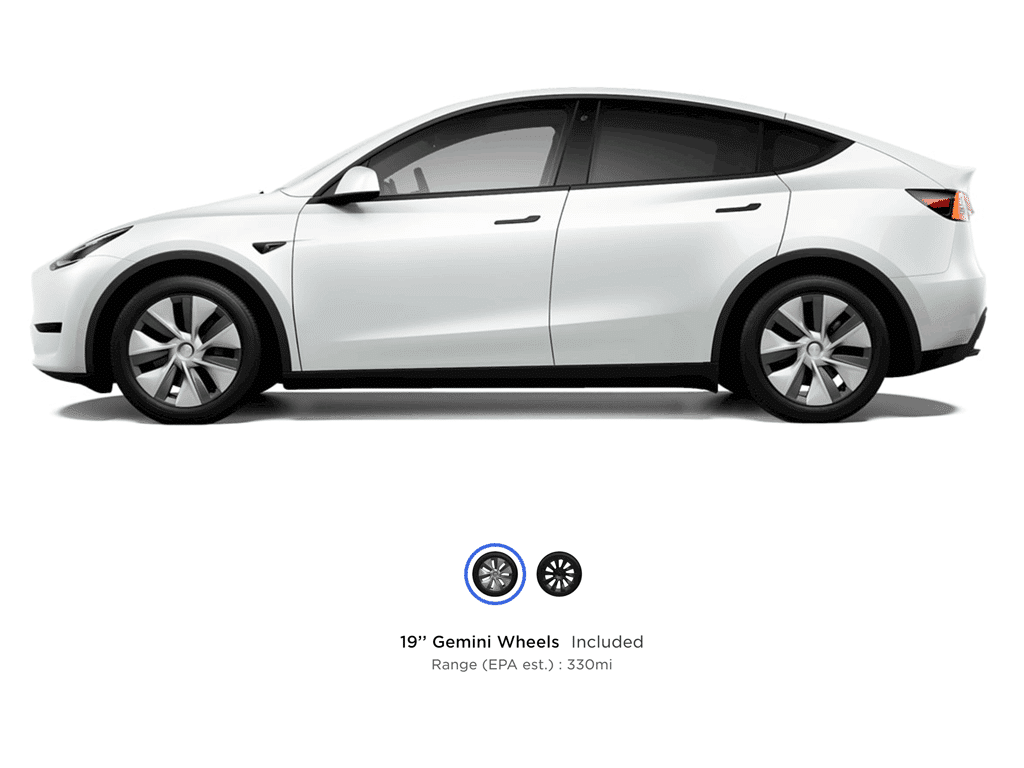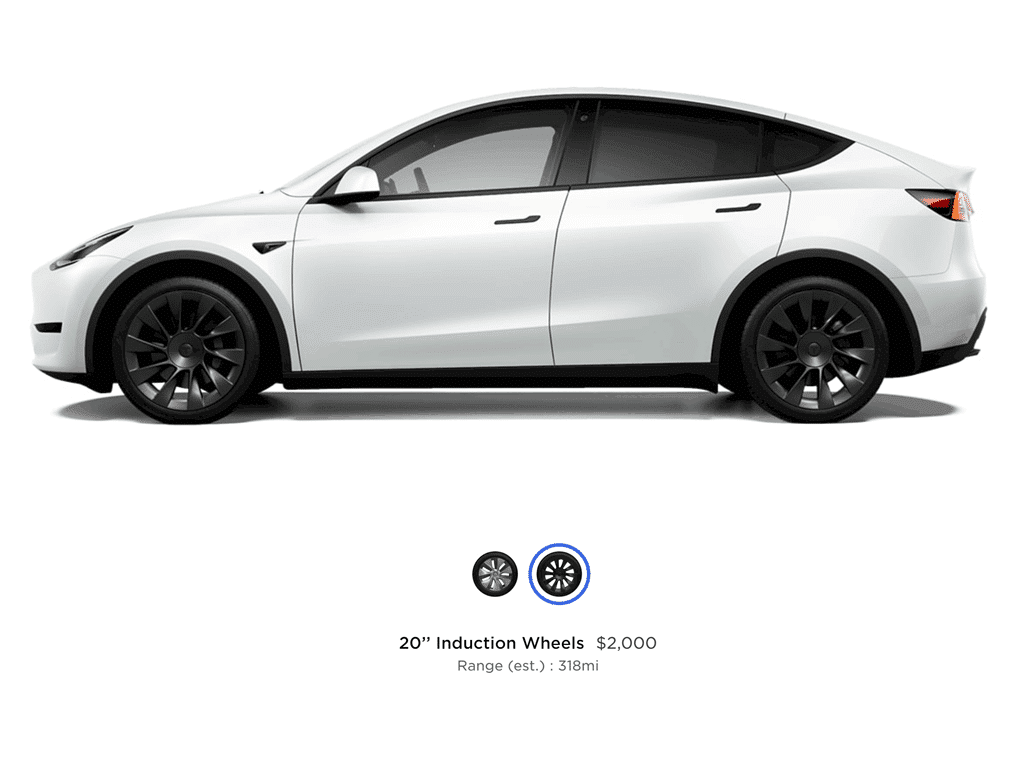Since my story on having a flat tire with my Model Y, I've gotten a lot of messages asking about Tesla tires, and interestingly, many of those pointed out those curb rashes on my car's rim. So, I'll talk more about Tesla tires, rims, and those pesky scratches on the wheels and share some tips on how to avoid them.
But the gist is this: with Teslas, going with fancy wheel options will only cost you more money with little in return.

Tesla tires: It’s (still) your driving habit that matters
The first thing to remember is that Tesla uses the same type of tires as any other car. There are different grades that cost differently, even run-flat options—except you shouldn't use them since, among other things, they are not suitable for range.
With EV, you have the option of getting tires with foam on the inside for noise reduction, but they are not must-haves. The reason you hear more tire noise inside an EV has to do more with the fact there's no engine noise than the tires themselves.
So, you can go to any tire shop (like Costco), punch in your car's make, model year, and trim, and get at least one option. Again, that's just like any other car.
The point is there's no such thing as "Tesla tires." Many Tesla reps, including those working at the service centers, have advised me to visit reputable tire shops.
When it comes to how long the tires last, though, that's a different story entirely.
Tesla EVs: The weight, the performance, and your wallet
Performance and weight generally don't go well together. But with EVs, we don't have a choice since these vehicles all have a hefty object on the inside, the battery. And that's the case with any Tesla.
The weight
As I mentioned in this post on EV efficiency, the current battery technology has a much lower energy density than gasoline or diesel, pound per pound. That's especially true for the new and affordable lithium-iron-phosphate (LFP) type.
So, while EVs might look light-weight and misleadingly "flimsy" than general muscle cars, they are always significantly heavier.
The 2023 Model 3's curb weight starts at 3880 lbs (1760 kg)—up to over 4000 lbs if you get the performance trim—whereas the 2023 Chevrolet Camaro is only 3351 lbs. The Ford Mustang Match-E is almost 1000 lbs heavier than its gas version—4,920 lbs vs. 3,868 lbs.
On any Tesla, the battery weighs north of 1000 lbs (450kg) and, on a full charge, can carry the amount of energy equivalent to just a few gallons of gas. In case it's not obvious, a battery weighs the same whether or not it holds a charge.
An internal combustion engine (ICE) car's full 20-ish-gallon gas tank generally weighs south of 250 pounds (120 kg). And it gets lighter as you drive.
To compensate, Tesla makes its cars out of light materials. Still, all Tesla cars are almost always heavier than (ICE) vehicles of the same tier.
And the combo of heft and performance will put a toll on the car's tires. That's the case for all vehicles.

I later got a similar jack and did the subsequent rotations myself. Note how the single jack can lift the entire side of the car, making the job easy.
The performance
If you have heard that Tesla cars are fast—as in they have high acceleration—you heard that correctly.
My Model Y Long Range can supposedly get from zero to 60 mph (100 km/h) in 4.8 seconds, which is relatively modest among Tesla cars. (If you're often in a hurry, you can shave that down to 4.2 seconds via a $2000 software upgrade. And with the Performance trim, you'd only need 3.5 seconds.)
Even on the low-end rear-wheel drive Model 3, which has a whole second more to get from 0 to 60 MPH, the acceleration still feels neck-breaking when you step on the panel.
When you sit inside the cabin and hit the accelerator, you feel a ridiculous change in velocity. You'll notice the difference no matter what ICE vehicle you've used.
Part of that experience is because the EV's acceleration has zero delays—your foot touches the pedal, and it goes instantly. And there's no clutch or gear-shifting to worry about—all you have to do is press on the pedal to have a smooth, consistent, and at times acute increase in velocity.
To put things in perspective, upon receiving the Model Y, I hit the accelerator a bit hard on our first test ride—the way I had always done on my old gas SUV --, and my toddlers in the backseats screamed. Since then, my boy has told me, "Not too fast, Daddy! OK?" each time he gets into the car.
I'm not huge on driving crazy—I've grown out of it into more of an efficient driver. So I often put the car in the reduced acceleration, or "Chill," mode, which adds a tiny bit of delay. The car is still fast even in this mode, and I have no issue passing or changing lanes in high-flowing traffic.
All Teslas, even the non-performance trims (and most EVs, for that matter,) all have crazy performances compared to those moving from an ICE vehicle, which is everyone.
And that extra performance, the thrill of it, plus the hefty weight will make you pay via tire costs—it's just physics. I know some new Tesla drivers who needed a new tire set after less than 15K miles. I changed mine at around 20K, partly because of the multiple tire plugs and repairs. (A new Tesla often comes with "starter" tires that don't last very long in the first place.)
With tires, it's not how fast you go but how often you abruptly change the speeds that affect their longevity.
So here's the deal: If you love that feeling of being pushed against your seat or want to impress those inside or outside of your car, you'll have to pay. And a Tesla makes that extremely easy for you.
Tesla tires: Those performance and fancy wheel options will cost you even more
But even if you don't want to go fast, Tesla's performance wheels have their other appeals: They look great.


Indeed, when buying a new Tesla of any trim, you can get a larger rim. For the Model Y LR, that'd be the 19" Gemini Wheels (standard) vs. 20" Induction Wheels (a $2000 upgrade). Other models and trims have similar wheel upgrade options.
I have to admit the 20" Induction Wheels look great on my car, but I decided against them because they would reduce the range slightly, not to mention I have better things to do with a couple of thousand dollars. And that turned out to be a wise decision.
Remember that the wheels' diameter remains the same regardless of the rim size you get. So to accommodate for the larger inner ring, you must use tires with thinner walls. In other words, the rims are now closer to the road's surface.
And the combo of thinner tire wall, hefty weight, and high performance can mean trouble—your car now requires well-maintained paved roads.
You can drive them on a bad road, but that might cause you even more. The drawer below includes a true story of my friend Luis who put his Model S Performance on a rough ride.
Model S Performance vs. Baja California
Tesla Model S Performance on an adventurous road-trip, a true story

My friend Luis is a network engineer in the San Francisco Bay area. He drives a fully-loaded Model S Performance and is the person who inspired me to get my Model Y.
The Model S has an air suspension—generally, the driver doesn't feel the road since the suspension absorbs all the roughness to deliver a smooth ride no matter the surface.
Luis is from La Paz in Baja California, Mexico, some 1500 miles (2400 km) from San Francisco Bay Area. The Mexican part of the road that crosses a large and scenic desert has never been great and since heavily damaged in 2014 by Hurricane Odile. Most towns along the way still have non-paved roads.

But Luis wanted to drive home on his Model S. The most tricky part was the charging. There is at least one 250-mile (400-km) desert stretch with nothing other than cacti on either side of the Carretera Transpeninsular.
The determined engineer meticulously mapped out all the places he could plug in his car, including motels, and the distances between them. He calculated it'd take him four days and three overnight charges when in Mexico.
And that worked out. Luis managed to drive to La Paz and back to the San Francisco Bay Area without ever completely running out of juice—though it did get "quite close" a few times.

But the trip there did take longer than he had anticipated.
On the trip there, trouble first started near Mulege, a small beach town 300 miles from La Paz. The car got a crack on the front rim that required immediate repair.
And that was no easy task since the car was the first Tesla local folks ever saw. But with some effort and extra time, he got the wheel temporarily patched up and continued to his hometown, with multiple stops along the way to refill the tire with a portable inflator.
And when in La Paz, he discovered that the other front rim of the car also got a crack.
As it turned out, those performance tires weren't doing well with the rough terrain—their walls were just too thin.
After getting both front rims properly repaired in La Paz, Luis still had to get two new tires before he could drive the car again.

And then, when back in the Bay Area, he realized he needed to get all new wheels to be safe. And naturally, and naturally, he still got the performance options.
"It's worth it," he said, "but I won't drive it to La Paz again."
Tesla tires: Those pesky curb rashes and how to avoid them
If you pay attention to any Tesla on the road, you might note the curb rashes. They are especially conspicuous on black wheels.
But you'll also see them on almost all Tesla cars, especially the front wheels. There's a reason for that.

I put the first curb rash on my Model Y within 24 hours of getting the car when backing it out of my relatively narrow driveway. The worst part is not the rash itself but the fact I was cautious and had no idea how that could have happened.
I'm not one of those who care about the car—or things, for that matter—too much, but I take pride in being a "good" driver—as in having an excellent awareness of the car I'm driving. My vehicles generally don't touch or run over things I don't intend to.
So the rash came as a total surprise. It bothered me. It was like I did something terrible without even being aware of it. The next few days, I got another rash on the other front wheel, and when I was backing up on a relatively easy parallel parking job.
And that's when it became clear: It was primarily the design of the car's rear-facing cameras mounted on its sides (and the fact I was not used to them).
On a Tesla, when you put the car in reverse, you'll see not one but three rear-facing cameras—one on its back and two on its sides. They give the driver an excellent view of the surroundings.
However, the side cameras also create an illusion that the driver can see the entire sides of the car. Some might even mistake the visible back wheels for the front ones.
In reality, these two cameras are mounted below the side rearview mirrors and miss the front wheel entirely. That, plus the fact Tesla rims tend to be flushed with the tires' walls and the car's body instead of a bit recessed like in most vehicles, make curb rashes almost unavoidable for new drivers.
And considering the car's power and heft mentioned above, the rashes can be rather pronounced when they happen.
That said, give the front of the car more room than what you'd perceive from the side cameras when in reverse, and you'll be able to avoid those minor scratches. It takes some getting used to.


The takeaway
Curb rashes aren't that bad. In a way, they are signs that the car is now yours. We're all imperfect.
What's worth noting, though, is that Teslas don't have specific tires. They use the same tires as other cars. But these EVs are much heavier than ICE cars of the same tiers. That, plus the performance, means their tires will suffer.
Here are some practical notes: Avoid those fancy wheels (rims). They require more expensive tires that wear out faster and cause the car to have a shorter range with nothing in return but the look. Also, get tires made specifically for EVs. They might be a little more expensive but will last longer and even give you a bit of extra range.
And generally, with Tesla, the "performance" option is not synonymous with "tough." Quite contrary. While the car might handle and look better, its wheels are not necessarily strong enough for its power and weight combo.
Keep that in mind the next time you step on the accelerator.
Dong's note: I first published this post on October 17, 2021, and updated it on April 19, 2023, with additional relevant information.







Comments are subject to approval, redaction, or removal.
It's generally faster to get answers via site/page search. Your question/comment is one of many Dong Knows Tech receives daily.
Thank you!
(•) If you have subscription-related issues or represent a company/product mentioned here, please use the contact page or a PR channel.